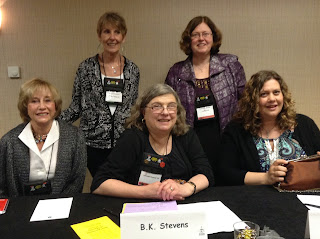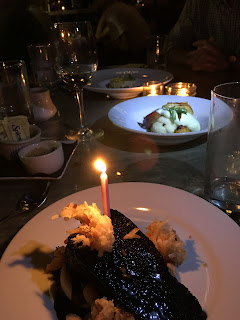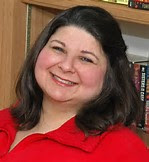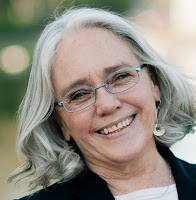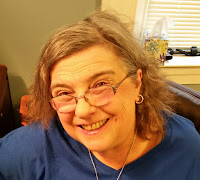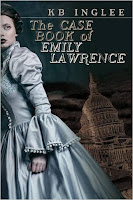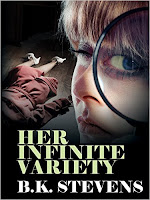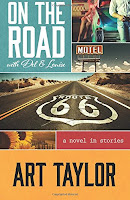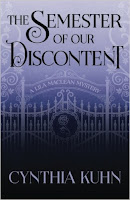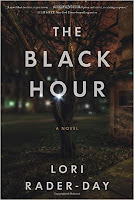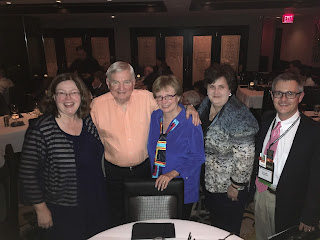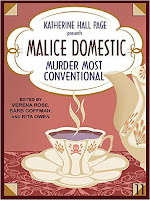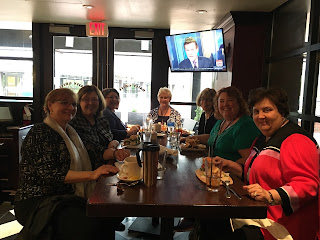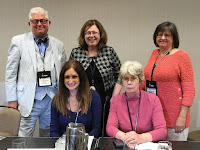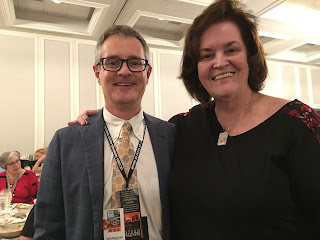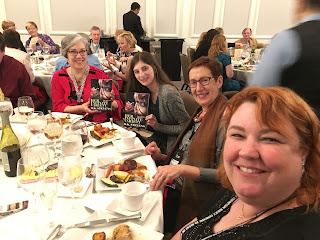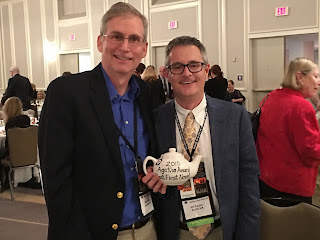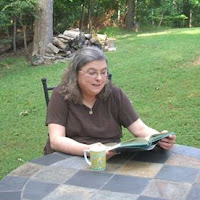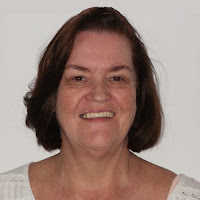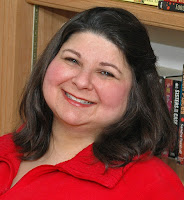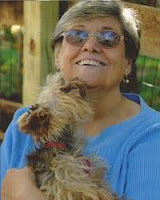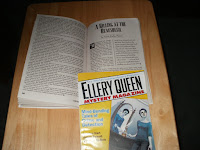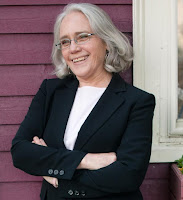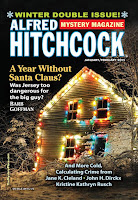In Memory of Bonnie (B.K.) Stevens
In Memory of Bonnie (B.K. ) Stevens by
Debra H. Goldstein
In the
movie, It’s a Wonderful Life, there
is a line “No man is a failure who has friends.” The outpouring of testamentary
comments on list servs, Facebook, and exchanged through private e-mails as
people learned of the sudden death of Bonnie
(B.K.) Stevens demonstrates what a success she was.
success was based on talent as a writer, but more importantly the ability to be
a mensch as a person. Whether through a congratulatory note, post, or other
gesture, Bonnie let people know she cared about them. In a date of social
media, she took the time to use those devices to connect with a human touch.
and I became list serv acquaintances in 2014, but our true friendship began in
January 2015 when, while reading back issues of Alfred Hitchcock Mystery Magazine,
I came across her short story, Thea’s
First Husband. I didn’t know it had been nominated for Macavity and Agatha
awards, only that it moved me in a way few stories, other than Shirley
Jackson’s The Lottery, had. As a
bottom of the heap short story writer, I recognized I was reading how a master
interweaves plot, dialogue, and setting to escalate tension and intrigue a
reader. I wrote Bonnie a fan e-mail telling her this and asking if she ever
taught classes. I told her I had had some success with having stories and two
novels accepted, but hadn’t had the guts to try for AHMM or EQMM, but reading
her story moved me and I hoped there was a way I could learn from her.
Her
reply was, as I came to learn, classic Bonnie. Humble and a lesson in itself:
Thank you so much for your kind words about “Thea.” My goodness! That
didn’t just make my day–it made my week, possibly my whole month.
No, I don’t teach any online classes. I’m a retired English professor (at
least a temporarily retired
one–who knows what the future holds?), but even
when I was teaching, I usually taught composition and literature; I taught
creative writing only a few times, and I’m not sure I was very good at it. I
don’t know of any classes to recommend, but I can tell you that my favorite
books on writing fiction are Stephen King’s On Writing (especially the
second half of the book) and Francine Prose’s Reading Like a
Writer. I also like Renni Browne and Dave King’s Self-Editing
for Fiction Writers–I don’t agree with everything the authors say, but it’s a
thought-provoking book. Blake Snyder’s Save the Cat focuses on
screenplay writing, but I find the advice on story structure helpful
(especially Chapter 4). And if you’d be interested in some old-fashioned advice
that still seems sound to me, you might look at Anthony Trollope’s An
Autobiography, especially chapters 12–14 (though there’s good advice
scattered in many other chapters,too).
I hope that’s helpful. Again, thank you for what you said about
“Thea.” I’m going to treasure those words!
Regards,
Bonnie
encouragement and congrats in the next few months and agreed to meet in person
in Raleigh at Bouchercon. We met, embraced, talked and began a tradition with
Paula Benson and Art Taylor of sharing a meal.
well as her adult and YA novels: Interpretation
of Murder and Fighting Chance.
We talked a lot about Fighting Chance,
which I five starred and she wrote a blog about on my personal blog, “It’s Not Always a Mystery.” The book
also was nominated for an Agatha and other awards.
Paula, Art and me after she fell and was injured just before the conference. We
toasted her in abstentia, but made up for it with a delicious group dinner at
Bouchercon New Orleans and drinks at Malice 2017. Because she couldn’t do a private dinner at
Malice 2017 (I sat at her table during the banquet where her novella, The Last Blue Glass, was honored as an
Agatha nominee), we made definite plans for dinner in October at Bouchercon
2017. Malice, in Bethesda, was only drinks because she used her dinners, other
than the banquet, to visit with her daughters Sarah and Rachel.
Bonnie was like a school girl in her love and adoration for her husband,
Dennis. Seeing them together at conferences or in pictures she posted on
Facebook from their wedding, there was no difference in the looks of devotion
and joy they shared. Her talk of her two daughters, Sarah and Rachel, and of
Sarah’s children’s accomplishments combined praise, love, and pride. This year,
we compared nachas (happiness) of having our first grandchildren’s bar/bat
mitzvahs and kidded we should introduce her unmarried Jewish daughter to my
single Jewish son.
children, but what I will remember is a package I received a week after Malice
2017. It contained a note and five copies of the May/June 2017 issue of Alfred
Hitchcock Mystery Magazine that Bonnie and Dennis collected from their
registration bags and the giveaway room. The note told me she knew I would want
extra copies of the issue that had my name on the cover and my first AHMM
story, The Night They Burned Ms. Dixie’s
Place in it and that she thought it was an award winning story. Who knows
if it will be nominated for anything at the next events at which it is
eligible, but it won the biggest award in my book – Bonnie’s approval.
B.K. “Bonnie” Stevens: True Friend and Good Writer – Paula Benson – The Stiletto Gang https://www.thestilettogang.com/2017/08/bk-bonnie-stevens-true-friend-and-good.html



